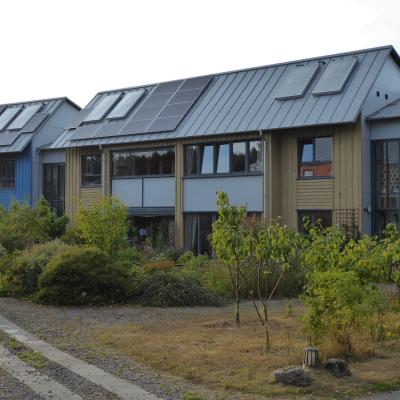Conclusions
The inconvenient truth is that cheap fossil fuel has driven agricultural productivity, mass travel and access to cheap consumer goods. These activities are causing our climate to change.
Much of this is due to excessive and extravagant consumption primarily by wealthy people. We all know and understand that our use of electricity, driving, flying and heating our homes drives carbon emissions. But the four ‘hidden’ elephants in the room are our excessive consumption of goods including fast fashion, our dietary demands including beef and dairy, society’s use of cement and concrete, and the refrigerant gases and energy used for cooling.
We are failing. We really are not taking this seriously. And we have not yet seen what a changing climate and natural world will throw at us unless we change. Total emissions of all greenhouse gases have risen from 30 to 45 billion tonnes since the first global climate agreement signed in Kyoto in 1990 with half of all human emissions emitted from that date. We are perilously close to triggering the release of huge natural stores of carbon and methane from the permafrost and from forest fires creating an unstoppable spiral.
The scale of the challenge is enormous. We need to transform society in the next two decades. This will involve hundreds of minor changes and many big changes too. To make sense of all the actions proposed in this book, a Green Action Plan is included as an appendix that summarises the actions that government, business and individuals can take to address climate change. Governments need to set the policy framework and regulations; businesses need to provide us with better choices and individuals need to understand and take account of the impact of their choices on climate and nature.
We should restore nature to store much of the carbon that we have released from historical changes in land-use. But this is not enough; our priority must be to stop emitting billions of tonnes of carbon a year from burning fossil fuels. To stabilise our climate we will need to remove some of this carbon from the atmosphere and bury it underground. We need to understand the scale, interactions and limitations. There is insufficient land to sustainably grow the food that we need and to satisfy other demands such as biomass for heat, liquid fuel, construction materials and to manufacture bio-based chemicals and products. We must therefore prioritise based on sensible science.
Climate change is not an isolated environmental issue. It is entwined with population growth, poverty and inequality, habitat destruction and the pollution of our air, water and soil. We need to tackle all these alongside cutting our carbon emissions. For example, we can contain population growth through universal access to contraceptives and by providing social security to reduce the pressure to have lots of children to look after elderly relatives. And, easy access to clean water can free up time for young women’s education, raising their aspirations which also leads to a fall in the birth rate.
****
The best time to plant a tree was 40 years ago; the second-best time is today. If I had a magic wand, I would travel back 40 years in a time machine and place a global carbon tax on the extraction of fossil fuel and ramp the tax up steadily over time. We could still set a global tax today, but unfortunately there seems to be no prospect of politicians agreeing to this. Instead, we need to design a myriad of complex policies to achieve the same ends.
The solutions could come from three sources:
- A top down, formal process with governments cooperating through the United Nations, setting targets, policies and regulations.
- Business pushed by shareholders and investors - influencing their supply chains and consumers.
- Community and consumer choice - who we vote for, what we invest in, what we buy and how we influence one another.
The reality is that we need all three to work together but led by government regulations. For example, how can consumers make good choices if products and services do not have a carbon label on them? Governments need to regulate, business needs to apply the regulations and then retailers can offer consumers clearer carbon choices.
The common-sense solutions to our climate and nature crises can be summarised as:
- Reduce our need to travel and electrify remaining travel.
- Invest in innovative solutions to increase the efficiency of industry, decarbonise our electricity generation and heat production.
- Consume fewer manufactured goods, and for business to adopt circular economy approaches to what we do consume.
- Stop deforestation, restore degraded land.
- Shift to a predominately plant-based diet.
We need to believe and campaign for a future in which we respect and live in harmony with nature, consume what we need with no waste, enjoy satisfying lifestyles, live in strong communities - and all powered by renewable energy.
We need to direct and unleash the creative power of capitalism. Sensible government policy, aligned with innovation directed at sustainable solutions enables business to ramp up production, decrease costs and roll out solutions at scale - as evidenced by the dramatic fall in the cost of wind and solar power, and the rapidly falling cost of electric vehicles.
Tackling climate change is a technological, economic, business, social and political issue requiring international cooperation. Given their large and growing populations, what the governments and people of China, India and fast growing countries like Nigeria choose to do will determine if we win the battle. We need to develop and disperse the technology from advanced countries and to learn from the good example of countries like Costa Rica who are restoring their forests and improving lives.
If we could put a man on the moon in the 1960s, then we should be able to ..... (sorry, but it is only fair if you buy the book to read the rest)





